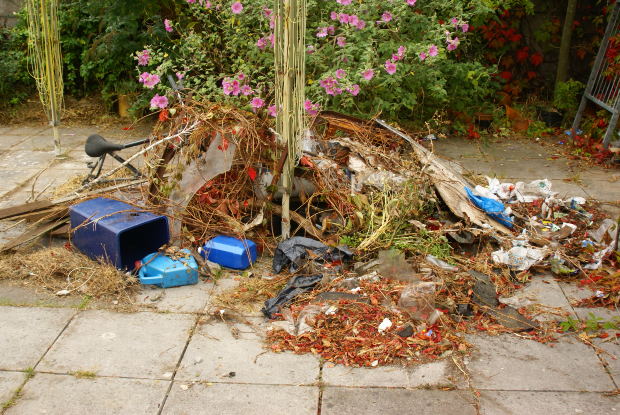Dexway English Magazine: B1 – Edition 3
MEMEs
SELF-REPLICATING IDEAS
Few weeks ago, on my social network page, someone posted a meme called “What teachers do”. If you have not already seen this, let me explain it briefly. The “What teachers do” meme, like other memes, is 6 photos with 6 captions from different points of view on teachers.
For example “What do teachers do” meme shows the job of a teacher from the position of friends, parents of the teachers, society, kids, self and what teachers actually do.
I started to look where this idea came from, I found out about this theory of meme. A meme is an idea that spreads from one person to another within a culture. A meme can be an idea, a single word or even a whole language – in this case it is a way of displaying 6 images created by teachers on how they feel the world sees them and the work that they do. The name was invented by Richard Dawkins to talk about evolutionary principles of how ideas spread within cultures similarly to genes, they are passed downwards and at the same time diluted or weakened.
How exactly do memes spread? Some research has been conducted on how these memes are transferred or moved around networks. Each line in the picture below is a connection between one terminal to another; the length of the line shows how long that terminal was connected. From this, it is very easy to see how computer usage has helped cultural ideas to spread.
The Internet meme, such as this one, spreads very quickly around the Internet and is often changed or altered by users. It shows how creative we can be. In you look online you can find a “What I really do” for nearly all professions, but my favourite is this one about teachers.
HERBAL VS MODERN MEDICINES
HOW DO YOU MAKE YOURSELF FEEL BETER?
Feeling sick? Got a headache? What do you reach first? A bottle of pills or some tea? In this day and age most people tend to go for a modern medicine approach and take a few pills to get rid of pain. In our fast paced lives we are always looking for immediate solutions and results. If we have a cold, we want to feel well in a few hours not wait a few days. Modern medicine has always been the preferred choice for Western cultures. But are there other options?
A myth among many people is that herbal medicine is a very primitive form of treatment. But if you look further into it…. About 75% of today´s medicines come from plants! A common medicine such as Aspirin is derived from white willow bark. Many Herbalists and believers in herbal treatments argue that so many side effects come once the drug is taken from the plant and made into pills or powder so that it is no longer in a natural state. It is hard to ignore thousands of deaths every year from pharmaceuticals.
For thousands of years, herbal remedies have been used to cure everything, Peruvian bark for fevers, Foxglove for heart problems, sweet clover for anti-clotting and snakeroot for tranquillizers. That is not to say that modern medicine should be forgotten. Medical treatments such as chemotherapy, dialysis and organ surgeries are still very much needed to help treat and heal us. Some doctors, physicians and others in the medical field do acknowledge herbs can help some ailments, but they are not effective for serious illnesses.
Whatever course of treatment offered, it has to be your own choice. There is no correct answer in this debate. Being safe, healthy and informed is the best way to be at your best.
What helps you get better?
GIVING ADVICE!
STRONG SUGGESTIONS.
There are 5 things we will look at, giving advice, being asked for advice, declining to give advice, asking for advice and thanking someone for their advice. Some general things to remember is we use “should” and “ought” for something we just think is advisable. You “must” and “have to” when we strongly urge someone that they have to do something.
How do you respond to someone asking for advice? Some common ways we could respond to these types of questions are; You should…., One idea is…, Have you tried…, If I were you…., In my experience it is best to…., I would suggest/advise…..
Now what happens when we maybe are not willing to give advice, or maybe we don’t want to answer the questions? How could we respond?
“I don’t know what to advice, I’m afraid/ I wish I could suggest something, but I can’t/ I wish I could help/ I’m afraid I can’t really help you”.
There are many sources we can ask for advice, family, friends, co-workers, a boss, or someone we look up to. We might even consult someone we don´t even know online through blogs or websites or if it is a relationship or personal problem we might write a “Dear Abbey” letter. (It is normally an advice column in many newspapers. They could be a psychologist/therapist or maybe just someone who gives good advice, who helps people that write in with their problems).
How could we ask for suggestions?
I need your help!/ I need your advice!/ What do you think?/ What should I do?/ What would you do if you were in my place?
And finally thanking someone. Now this will vary of course on that type of problem or how much someone´s advice helped. But some commons ways to say thank you could be: Good/great suggestion. I will do that, thank you. Thanks/Thank you for the advice.
Innovation
INNOVATE OR DIE.
The New York Times journalist and Bill Gates believes the same thing: innovate or die. What is innovation and how can it benefit us?
Innovation is a buzz-word meaning change; we offer or develop a new solution to a product or service, not to be confused with re-branding. Every organisation has to change in order to maintain the competitive edge.
Milson Stationary suppliers, needed to change the way it worked, it needed to improve communication and collaboration between sales staff, marketing and designer. They asked for feedback from their employees and based on the feedback they changed the office environment into a mini-theme park, complete with cafes, diners and a town square complete with town clock. They quickly found that the new work space set up allowed “spontaneous exchanges” to take place, communication instantly became better and Milson quickly witnessed growth and higher profits.
Innovation could be investing in a new coffee machine or offering free drinking water, or modifying your employees rest area. Look around your office how can you improve on what you are already doing?
The customer is always right…
ARE THEY?
In America, they have a saying that is ¨the customer is always right”, the validity of this statement really depends on what country you are from. It means when it comes to customer service whatever the customer says or demands should be met, no matter if it´s irrational or unreasonable. So how does this lead to better customer service?
Now, with the popularity of social media, bad service can be shared very quickly and publicly. But why isn´t the customer always right? A simple and plain fact is customers don´t always know what they want. If customers are unsure of the answer, they will make it up which gives abusive customers an unfair advantage. And what customers expect from a company or business is not always rational or realistic. Some customers are just bad for business.
This style of customer service drives a wedge between management and their employees. In America, sales and service reps are very heavily reliant on commissions and tips on top of their wage. One very important thing to remember is that it does cost a lot of money to replace a customer but it costs A LOT more to recruit, hire, and train new employees.
Maybe, instead of the ¨the customer is always right”, we as a customer should be asking “how much service is it fair to expect? “.
GEOCACHING
LET THE HUNT BEGIN!
Do you like adventure? Do you like looking for treasure? Do you enjoy the outdoors? Then, maybe Geocaching is for you! It is an outdoor recreational activity where players locate hidden containers called ¨geocaches¨. Players use a smartphone or GPS (Global positioning system) devices to locate the hidden items and then, they share their adventure and experiences online. You can download many phone apps that offer help and guidance while geocaching. There are currently 2,037,637 active geocaches and over 5 million geocachers worldwide according to the geocaching official website.
It was first played in May 3rd of 2000, after GPS improved their accuracy in their system. It is similar to a 150-year-old game called Letterboxing, which has clues and references to landmarks embedded into stories. A geocacher will place a waterproof container with a log book, pen or pencil, and some trade items in a location and then record the coordinates. They are placed on the geocaching website, where people can see them and try and find the location. The items inside are free to take as long as you replace it with something of similar or higher value. Items that are hidden are usually very low in monetary value but may have sentimental value to the finder. Things inside have been CDs, books, ornamental buttons, unusual coins or small toys. In recent years, a few other games have begun that are similar such as Munzee, which uses QR codes, Geodashing where people find randomly selected “dash points” and record what they find there and Ingress by Google.
Some critics of these games consider it litter and certain cachers have been approached by the police because they were acting suspicious. Does this seem like a dangerous activity or something you would like to try?

